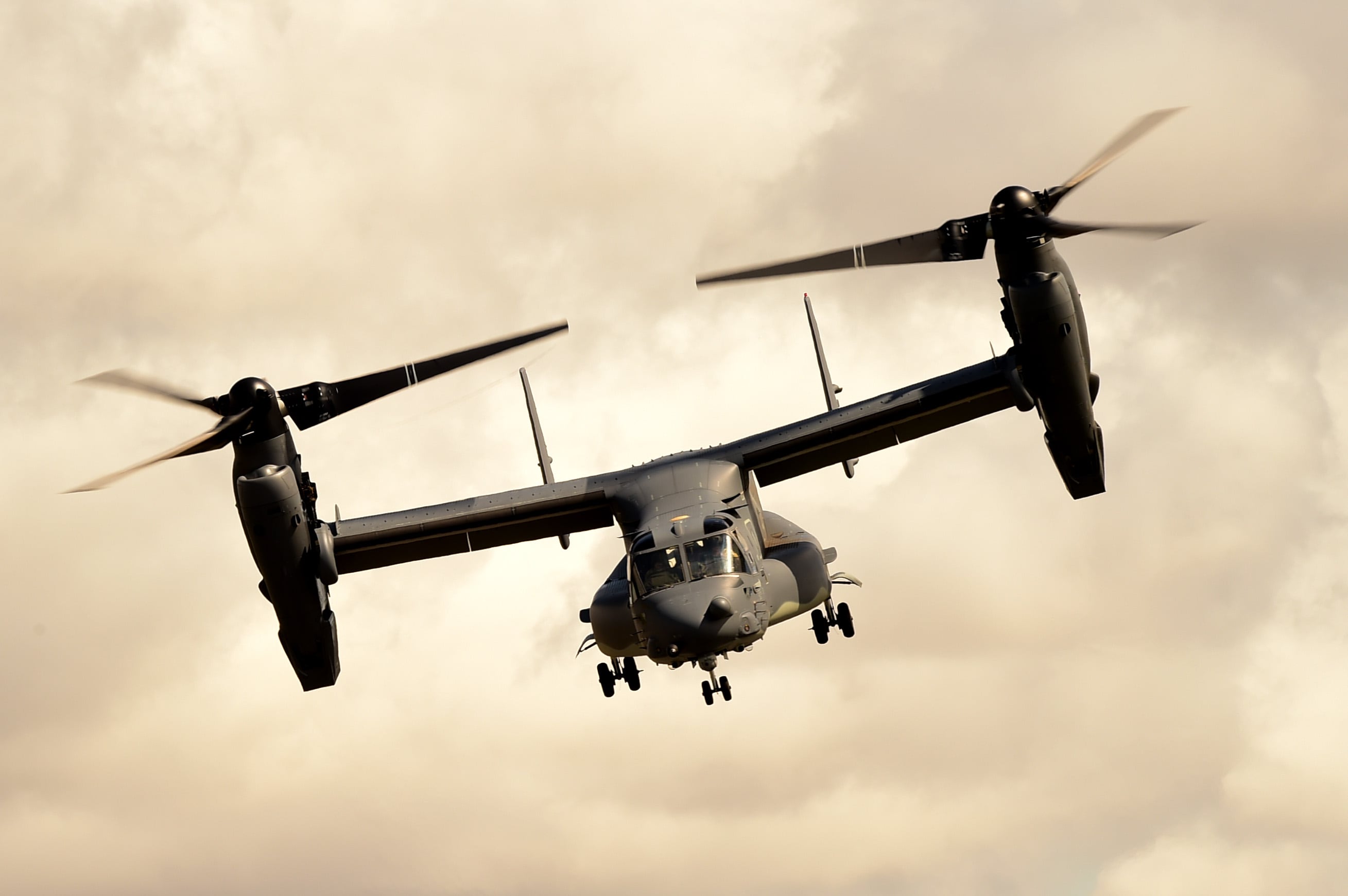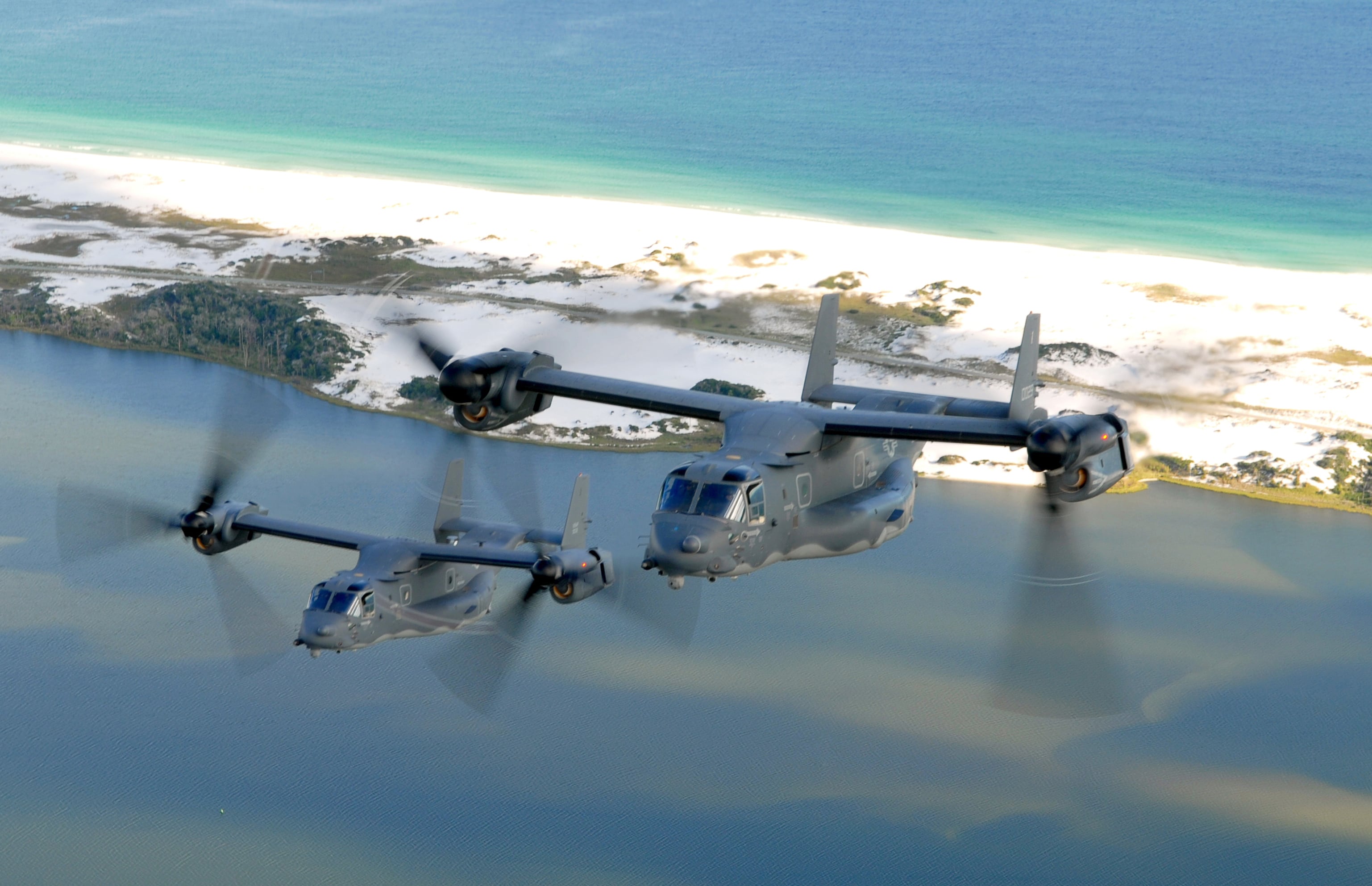Editor’s note: This story was updated Sept. 8 at 11:32 a.m. to include more information from the Norwegian Armed Forces and U.S. Air Force Special Operations Command.
A CV-22 Osprey tiltrotor aircraft belonging to the U.S. Air Force is stranded at a Norwegian nature preserve after suffering a mechanical failure in flight, the head of Air Force Special Operations Command confirmed Wednesday.
The Osprey has sat among the ferns and salamanders of the High North since Aug. 12, when the tiltrotor system’s erratic clutch forced airmen to make an emergency landing at the Stongodden preserve on the island of Senja in Troms, Norway.
The area’s tricky terrain and weather now create a confounding rescue mission even for special ops airmen, who are trained to extract troops from remote locations around the world.
“These things never seem to happen at airfields,” AFSOC boss Lt. Gen. Jim Slife lamented during a discussion hosted by the Air and Space Forces Association. “They always seem to happen in Norwegian nature preserves above the Arctic Circle at the onset of winter.”
A photo provided by the Norwegian Armed Forces on Thursday shows the CV-22 at rest on a lush green plateau on the edge of the Norwegian Sea.
The Norwegian Armed Forces have together with the environmental protection office at the County Governor made a plan to retrieve the Osprey from the nature reserve, in dialogue with the U.S. Air Force.
Lt. Col. Eivind Byre, a spokesperson for Norway’s military, told Air Force Times that the U.S. and Norwegian troops worked with the environmental protection office in Norway’s northernmost county on a plan to retrieve the Osprey. They hope to launch that operation early next week.
Norwegians plan to build a small wooden road that will protect vulnerable wildlife at the reserve while they shimmy the aircraft closer to shore. Then a boat equipped with a massive crane will get as close to the Osprey as possible without running aground in shallow water, pick up the plane and move it elsewhere for repairs.
“The aircraft is damaged but the extent is unknown,” AFSOC spokesperson Lt. Col. Becky Heyse said. “With other similar incidents, the gearbox had to be replaced, and, in some instances, the engine as well.”
Officials are now waiting for the crane boat to arrive, Byre said Thursday.
“Weather and wind in Norway this time of the year can change quite quickly, and is an important factor to consider,” Byre said. “Stongodden is located quite remotely.”
The 7th Special Operations Squadron at RAF Mildenhall in England owns the stuck CV-22, according to the Dutch Aviation Society’s website, Scramble. It’s unclear what mission the Air Force crew was tasked with at the time of the incident, or what happened to them after they landed the Osprey.
Multiple recent clutch malfunctions, including the incident in Norway, led the Air Force to temporarily ground the 52-aircraft fleet from Aug. 16 to Sept. 2. Service officials have discussed a way forward with the U.S. Navy and Marine Corps, which also fly V-22 variants.
“We’re in the midst of a recovery process to get that airplane to a place where we can swap out the engines and the gearboxes and all the things that need to be replaced. That’s underway right now,” Slife said.
RELATED

The clutch allows the engine to power the gear system that turns the Osprey’s massive rotors. Either engine can drive both rotors in case one engine fails. The issue arises when the clutch slips and corrects itself, rapidly switching that load between motors.
“Those large, transient torque spikes exceed the limitations of the engines and the gearboxes,” Slife said. “Each one of them results in a ‘Christmas tree’ of caution lights in the cockpit and some pretty squirrely flight control inputs.”
Fifteen such clutch malfunctions have happened over the past decade or so, including four in the Air Force and 11 in the Marine Corps. Two have occurred on Air Force aircraft in the past few months. Aviators have landed safely.
“[I’m] very tightly connected with [Lt. Gen. Michael Cederholm], the deputy commandant for aviation … in the Marine Corps,” Slife said. “We talk multiple times a week on this, along with our teammates at [Naval Air Systems Command].”
RELATED

The Air Force’s Ospreys returned to flight Sept. 2 without a fix in place. It could take the V-22 Joint Program Office up to three years to deliver hardware to resolve the problem.
In the meantime, AFSOC has introduced flight restrictions to try to limit situations that could cause propulsion systems to falter. That includes momentarily pausing before ramping up to full power during takeoff, and opting to depart from runways instead of helicopter-style vertical takeoffs.
“I feel pretty comfortable [with] appropriate mitigation measures in place,” Slife said.
He wants to dig into the circumstances shared by each Osprey at the time of their mishaps and eliminate what contributing factors the service can. Almost all of the incidents involved aircraft with gearboxes that have been flown for the same amount of time, he said.
“We’ve all understood that this is an actual mechanical problem. What has eluded us is the root cause — why is the clutch slipping in the first place?” Slife said. “My view is, we may not understand why it’s happening, but we absolutely know what is happening.”
Rachel Cohen is the editor of Air Force Times. She joined the publication as its senior reporter in March 2021. Her work has appeared in the Washington Post, the Frederick News-Post (Md.), Air and Space Forces Magazine, Inside Defense, Inside Health Policy and elsewhere.





